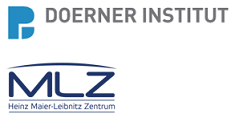Speaker
Description
In Ancient Egypt the lapis lazuli was the most precious gemstone as it was considered a sacred stone connected to the gods. Its special dark-blue colour symbolized the night sky and the starry heavens. Due to its symbolism and its scarcity, lapis lazuli had been used from the Predynastic period onward as the material of amulets, beads and inlays in jewellery. Despite its early presence and
some historical textual references, there is no physical evidence of a lapis lazuli mining area within the territory of Ancient Egypt. The most widely accepted concept is that the ancient Egyptian lapis lazuli originated from the Badakhshan Province (Afghanistan), however other new potential Asian extraction sites (Pakistan, Tajikistan, Lake Baikal area, Myanmar) were also suggested recently. This stone had reached Egypt most probably from Mesopotamia through trade routes, or could also be brought as a tribute from various localities like Assur, Babylon.
There are several ancient Egyptian artefacts of lapis lazuli in the Egyptian Collection in the Museum of Fine Arts, Budapest. In this project we aim to investigate these objects in order to determine the raw material and the provenance of their raw material.
The lapis lazuli amulets kept in the collection of the Department of Egyptian Art in the Museum of Fine Arts Budapest originate from the 19th century private collections. Their provenance is unknow. These amulets were made between the second and first millennium BC. The purpose of our examination was to establish the origin of the raw material used for the production of these amulets. In the focus of this examination were 23 different amulets, 5 djed-pillar amulets and 2 wedjat-eye amulets from the collection of the Department of Egyptian
Art of the Museum of Fine Art, Budapest.
As these artefacts are irreplaceable, we have to strictly apply non-destructive analyses.
Lapis lazuli is an opaque semi-precious stone consisting mainly of a blue mineral, lazurite, an alumo-silicate of the complex feldspathoid sodalite group, and can be described as an isomorphic combination of haüyn and sodalite. The chemical formula for lazurite is (Na,Ca)4(AlSiO4)3(SO4SCl), but with considerable variation in the amounts of SO4, S and Cl. Additionally, pyrite and calcite together with relatively small amounts of accessory minerals are present in the stone lapis lazuli.
Because lapis lazuli is very inhomogeneous, and the objects have often been exposed to the weathering for thousands of years, any surface measurements carry the risk of falsifying the results of the analysis. Prompt- gamma activation analysis (PGAA) is a nuclear analytical technique utilizes the characteristic prompt γ-ray spectrum measured during the irradiation of the sample for determination of elemental compositions.
Since neutrons can enter the deeper regions of the sample, they are ideal for bulk analysis. In the last years, several attempts have been made to apply PGAA, to determine the origin of lapis lazuli. The first results in distinguishing lapis lazuli raw materials of different occurrences (Afghanistan, Lake Baikal, Ural, Canada and Chile) were already published.
In addition, portable non-destructive techniques have been applied to the objects on-site at the Museum of Fine Arts, Budapest. In order to analyse the chemical composition pRFA (X-Ray Fluorescence Analysis) and in order to identify the mineralogical phases, Raman-Spectroscopy and Near-Infrared-Spectroscopy have been carried out. These techniques are similarly helpful, to identify lapis lazuli and other precious stones as neutron-based methods. The results obtained from complementary investigations have be combined with PGAA results.

